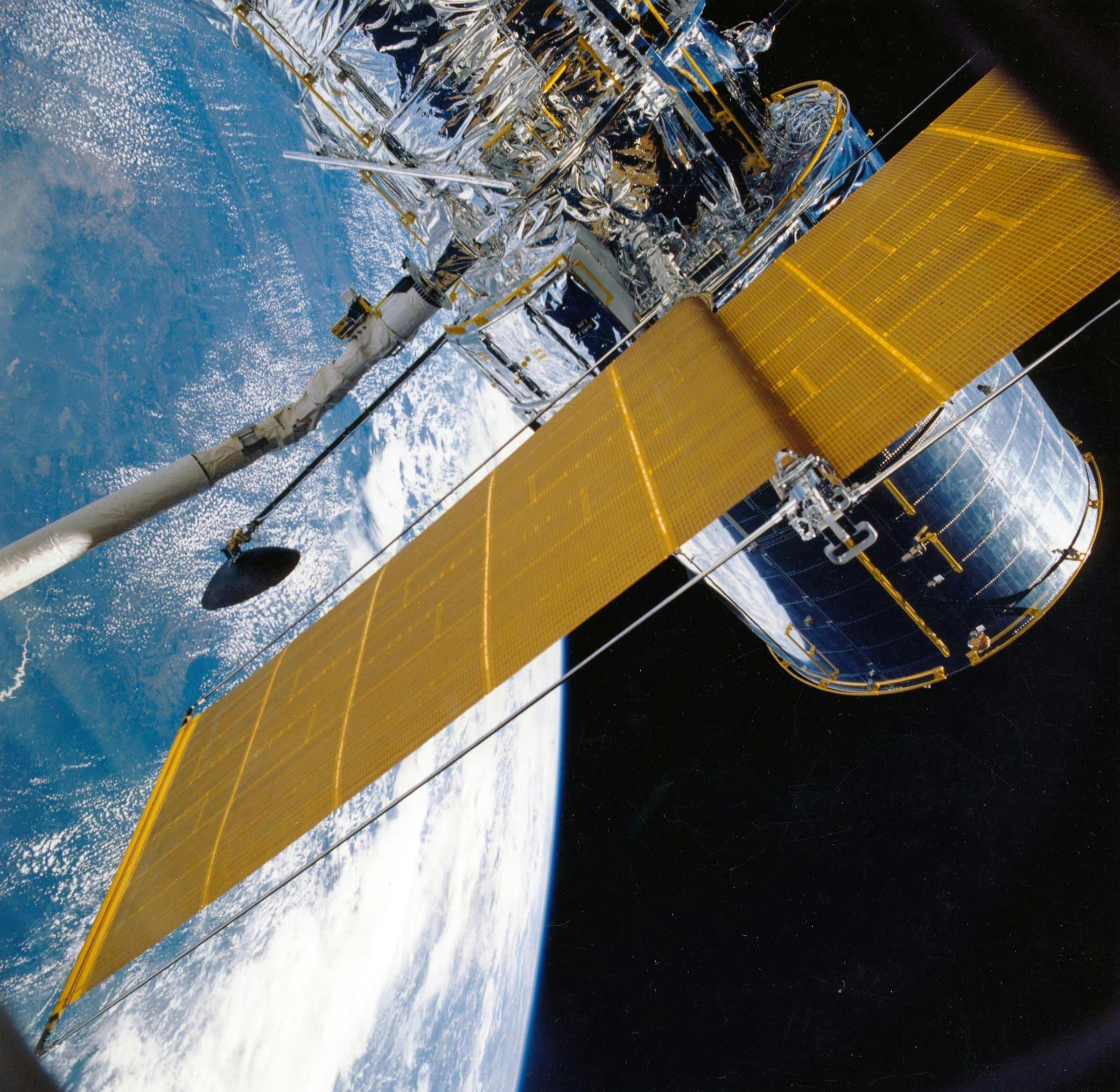Why model-based design is vital in aerospace innovation

Blog
In the aviation, aerospace, and space sectors, everything is about innovation. But it’s not just about being innovative; it’s also about increasing the speed of innovation. Since we at Intergalactic are total fanboys/gals of model-based design (MBD), we thought we’d give you an overview of MBD and why it's crucial to increasing the speed of innovation in the aerospace and space sectors.

What is model-based design (MBD)?
Model-based design, as you might expect from the name, entails the systematic use of models throughout the development process for requirements specification, system architecture modeling, design implementation, simulation, automatic code generation, and verification/validation.
In simple (or at least simpler) terms, MBD is a design philosophy that, when boiled down to its core, entails all requirements, interfaces, and anything else you’d you use to develop and produce a design being defined by a model (this could be an interface model, a performance/thermal model, a solid/installation model, etc.).
This differs from “legacy” or traditional design philosophies and approaches, which may use printed or digital spec sheets, textual requirements, Interface Control Documents (ICDs), performance tables or maps, files, written notes, mathematical equations, 2D drawings and sketches, exploded diagrams, flow charts, etc.
Model-based design is now used across a wide variety of industries and software applications, including motion control, signal processing, industrial equipment, military equipment, automotive fields, and as noted above, Intergalactic is a strong proponent of MBD for aviation, aerospace, and space applications.
Model-based design is often discussed in relation to system controls development and dynamic analysis. However, MBD can apply to a lot of different areas, including the solid model process, interfaces, requirements, steady state performance, etc.

How does model-based design improve real-life aerospace applications?
We asked Tony Ho, Intergalactic’s Director of Systems Engineering, to give us some real-world perspective on the benefits of model-based design in the aerospace arena.
“One benefit of MBD and defining things via models instead of text is that it eliminates ambiguity and rework,” Tony says. “For example, we often get customer requirements that are in a .pdf or Word document and it might say something like: for this day type, mach, and altitude you need to provide X amount of cooling. But even something seemingly that straightforward has ambiguity when presented in text format. What source is the customer using to define the day type (MIL-STD-810 or DO-160 or what)? What if an adjacent point requires more or less cooling? Does the point in between need to match the higher or lower load? Or do we do linear interpolation?”
Tony continues, “Then there’s the added work generated by clients who don’t use MBD for their full process. In this theoretical case, the customer, who normally already has a model of the requirements (such as an ambient boundary condition model), will need to translate that model to text as part of their process, and then we (the supplier) will have to translate that text back into some sort of mathematical model to make sure we’re meeting the requirements. It’s just a lot of added work that is prone to error or miscommunication.”
Another benefit of the MBD approach is that it opens up opportunities to perform model-sharing between client and manufacturer. Tony explains, “Perhaps the customer wants to take a preliminary version of our model to integrate with the aircraft-level model to do aircraft-level trades and optimization. Without both parties agreeing to prioritize the use of models developed early in the process and constantly refined, we would never be able to support these types of collaborations.” Without MBD being utilized by both parties, a lot of co-optimization is left on the table. Additionally, if MBD is not used early in the process, it’s also difficult to uncover and optimize important interactions across different subsystems or at the aircraft level until fairly late into a program.
A further key benefit of model-based design that Tony points out is that MBD opens up the ability to perform optimization that wasn’t really possible using “legacy” processes. “By formalizing and codifying requirements or constraints as well as an objective function, Intergalactic has been able to perform build analysis such as heat-exchanger optimization. What permits that capability is that we are already inherently reliant and dependent on models of performance, cost, weight, requirements/constraint, and objective function.”
Ben Bryan, Intergalactic’s Director of Space Systems, provided his perspective on the benefits of model-based design in developing parts and systems for aerospace and aviation. “When I was with Lockheed, I helped the VP of Manufacturing on a pet project that ended up getting implemented throughout manufacturing as a policy change, since its benefits were obvious,” Ben says. “In a sense, our version of model-based design defined a fluid transition of delivering a digital model all the way through the system to hardware delivery. Used for design and analysis, the model became the drawing of record (document control is key here) with no paper documents involved. This model was then sent to the plycutter and laser projectors for carbon fiber material templates, then to the CAM software for the machinists to machine, then all the way to full integration on the floor with the technicians using google glasses, working the model in a virtual-reality-like environment to assemble it all together.”
In short, Ben continues, “MBD is a way to let the computers that design in the nominal perfect world maintain accuracy and efficiency throughout the entire process and reduce risk and errors. That’s how I see model-based design working in the future… sending your model through the system with less chances of it getting it wrong.”

What are the key advantages of MBD for aerospace applications?
Tony and Ben have pointed out some of the key benefits to the model-based design approach, but let’s elaborate more fully on some key areas in which MBD demonstrates clear advantages over “legacy” processes.
Diminished errors (and lower costs as a result)
You’ve heard the old adage, “too many cooks spoil the broth.” Or, at least your grandparents have. What it means in this context is MBD allows fewer chances for errors, simply because there are fewer hands involved in the process.
This is especially the case when involving outside-the-organization collaborators in a project. In a “legacy” design process, the engineers design the part, and create a drawing to be built. That drawing has a series of GD&T (geometric dimensioning and tolerancing) that are used to communicate the intent and desire for the part. This can be misinterpreted, and/or it might be missing key information to communicate the intent. The drawing is then sent to manufacturing, who takes that drawing, interprets the intent, re-designs and tweaks it based on their view of the intent. Manufacturing then inputs the interpreted data into their software for machining, printing, prototyping, etc. There are lots of open opportunities for errors to be introduced.
Instead, in the pure model-based design world, the engineer designs the part, sends the model to manufacturing, manufacturing inputs the model directly into their processes and (ideally) nothing is lost in translation or misinterpretation, and manufacturing produces exactly what was modeled. Computers live in the nominal/perfect world with accuracy to the nth decimal. Keeping a model-based design throughout the process helps eliminate errors, ambiguity, misinterpretations, and rework. And this, of course, results in lower development costs and lower unit costs for the customer.
Speed and efficiency
It is faster and more efficient to cut out the multiple handoffs, redlines, signoffs, and revisions involved in the traditional design process. As noted above, fewer handoffs, less paper, and fewer chances for error means less time required for the modeling, design, and approval process. Models can show the nominal/perfect requirements and interfaces. Accuracy is increased with less ambiguity defining these interfaces.
Ben says, “When I’m designing a spacecraft and it will fly on a Falcon rocket, SpaceX sends me their model of the launch vehicle interface ring so I can match that to my spacecraft separation ring. The model will show dimensions and other data as close to perfect as possible for that interface. They don’t send me drawings anymore, just the models. It’s much faster.”
Customization / optimization / collaboration
When you set parameters and boundary conditions in your model you can then “lock those in,” leaving adjustable parameters open for customization and optimization opportunities. In this way, you let the model help set the pivot points for collaboration and optimized designs.
Furthermore, using MBD allows users to further extend the use of previously developed models to systems already in operation, creating digital twins to optimize system operation, monitor system status, and provide a feedback mechanism to the development team to make continuous improvements. This approach enables applications such as predictive maintenance and real-time fault detection.
Increased speed and ease of prototyping
MBD has certainly increased the speed of prototyping, especially now with the availability of high-efficiency 3D printing. A team can use MBD and “additive manufacturing” to produce functional prototypes for real-world evaluation and refinement at very little cost.

Are there any downsides to model-based design?
There are pros and cons to anything, and although in our view MBD is mostly gravy, there is a potential downside to a heavy reliance on model-based design. Ben points out, “Complacency can set in and might trip you up if you rely too heavily on what the model tells you without checking if it’s actually right. There needs to be an abundance of caution and an extra emphasis on peer reviews of the model and analysis.”
However, on the flip side, once you get the model right and it has been fully validated, it is easier, cheaper, more efficient, and faster to just “rinse and repeat” with your successful model.
So now you know a little more about MBD and why Intergalactic is fully on board. Once you see the benefits, it’s hard to think of an aspect of your life that model-based design can’t improve. Hmmmm… maybe we could rapid-prototype the perfect cheeseburger?
-Written by Intergalactic Scribe Jeff Davis, with contributions from Resident MBD Guru Tony Ho and Space Cowboy Ben Bryan.
Sources:
https://www.synopsys.com/glossary/what-is-model-based-design.html
https://www.mathworks.com/solutions/model-based-design.html
https://www.mathworks.com/campaigns/offers/next/why-adopt-model-based-design.html